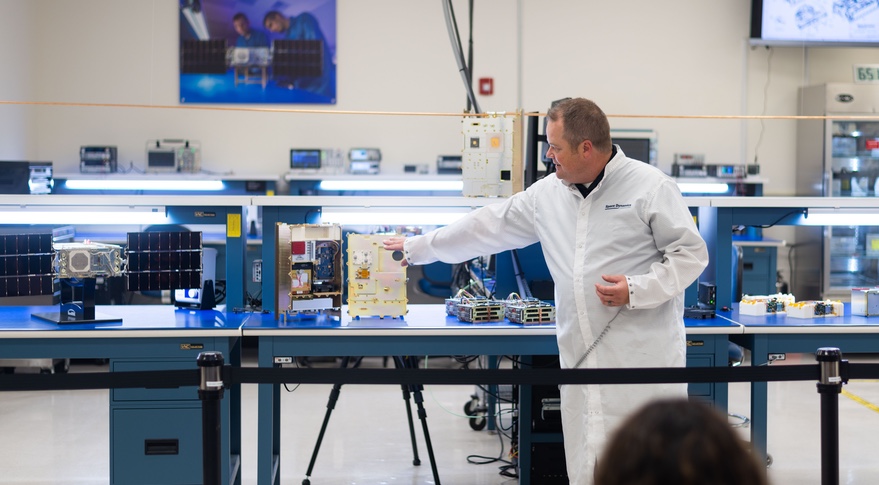LOGAN, Utah — The Space Dynamics Laboratory (SDL) has completed the first of a constellation of cubesats for NASA that will act as a giant radio telescope in space to study space weather.
At an Aug. 8 briefing, project officials from SDL and the Jet Propulsion Laboratory showed off the first completed cubesat for the Sun Radio Interferometer Space Experiment, or SunRISE, mission that NASA selected for development in 2020 as a mission of opportunity for its heliophysics Explorer program at a cost of $62.6 million.
The 6U cubesat is the first of six that SDL will build over the next several months, equipped with X-shaped radio antennas to pinpoint the location of radio bursts on the sun and to map the pattern of magnetic field lines, helping scientists link those bursts to activity such as coronal mass ejections that can cause solar storms.
The six satellites will fly together, acting as a single radio antenna with a baseline of 10 kilometers. Each satellite will operate independently, collecting and returning data to the ground weekly, where scientists will combine the data into a single observation of the sun.
“This is the first time that we’ll fly six spacecraft to serve as a single instrument,” said Jim Lux, SunRISE project manager at JPL.
This approach, called interferometry, requires knowledge of where each satellite is when it makes observations. GPS receivers on the satellites will collect that information at a high enough precision to allow the individual satellites’ data to be merged effectively without requiring pinpoint control of the satellites’ locations relative to one another.
“We don’t need to control them really precisely,” said Lux. “We just need to nudge them every once in a while to keep them in the right general place.” An additional factor aiding that is that the satellites will detect radio waves with wavelengths of tens of meters.
The first satellite served as a pathfinder for producing the rest of the constellation, said Tim Neilsen, program manager for SunRISE at SDL. “It’s been through a full suite of environmental and functional tests” that resulted in only minor adjustments to the design of the satellite.
SDL is now ready to proceed with assembly, integration and testing of the other five satellites, he said. All six satellites should be complete and ready for launch in April 2023.
Lux said the project is still working on launch arrangements for the satellites, with a current plan to launch them in mid-2024. “That could always change because we didn’t buy our own ride,” he said, instead relying on a rideshare launch opportunity.
The spacecraft will operate about 300 kilometers above geostationary orbit in a region known as the “graveyard,” where GEO satellites are retired. “That way, we don’t have to do anything special to deorbit at the end of our mission,” Lux said. “We just stop talking.” SunRISE is designed to operate for about a year.
There is no schedule pressure to launch by a particular date, he added. “This mission is observing the sun, and the sun will be there tomorrow, and the day after, and the day after that.”
